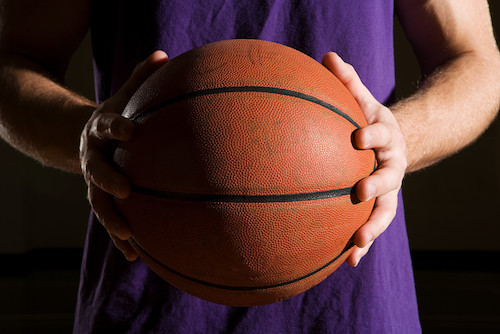Have you ever wondered why some people chase and fulfill their goals and dreams when others give up soon after the get-go? Are winners simply more relentless, resilient, and remarkable? Or is there a goal-achieving gene that only the privileged possess?
While it’s easy to blame genetics or fate when you fail to achieve what you aspire to do, science reminds us that goal fulfillment is neither entirely up to the stars nor our genetic codes. Certain conditions, traits, behaviors, and habits facilitate the process of setting and meeting goals. Others hinder it.
Believe it or not, you have the power to tap into your brain’s innate potential to target and realize what you desire.
Why Do You Need to Set Goals?
If you think of a goal in the athletic sense, it’s the endpoint in a race or the position where a player is supposed to be at just the right time to receive a pass in order to score a goal. Imagine playing football (or soccer) on a field with neither goalposts nor nets. If someone passed you the ball, where would you kick it? Where would you run?

Without targets and aspirations of some kind of win, you’d likely be lost. Without aiming to score, you’d have no clue where to focus your attention. When you succeed in anything—whether it’s a football tournament, a college entry exam, or your chosen career or business—it’s usually because you’ve learned when, where, and how to direct your attention.
Where are you directing your attention in your life right now? Where are you setting your intention? What’s your vision of success?
What Role Does Vision Play?
Do you like to cook?
If you’re like many cooks, you begin with an image of how the food will appear in front of your guests, savoring the sight of each dish as they tip their glasses in a toast. What aromas are in the air? What colors fill the room? When you take your first bite, what flavors delight you?
A multi-sensory vision of success kick-starts your motivation network. Your brain relies on your imagination, or your default mode network, to conjure up a delicious reward that fuels your determination to cook your best meal ever.
I often tell my clients to make vision boards. They help to externalize any fantasies spinning ad infinitum in the brain’s default mode.

Cut out pictures from magazines and paste them into a collage. Hang it on your fridge, so you’re reminded of your unique vision of success every day.
Whether your palate is filled with rosemary frittata and a round table of friends or a vintage sports car and vacation in Hawaii—anticipating sensual pleasures helps to motivate you to take the first steps to map out the life you desire.
You Need More Than Pretty Pictures
But vision boards alone won’t take you where you want to go. After you’ve hung up your vision, pin a step-by-step strategy next to it: one that anticipates what you will do to achieve the goal. Make sure you also anticipate setbacks and integrate them into a plan to overcome them.
What’s your insurance policy if your 1967 Stingray convertible crashes? What’s your backup plan if you burn the frittata?
Most cooks follow recipes, whether their own or someone else’s. Recipes help to articulate and achieve a vision of a delicious entrée. A recipe is a plan written down to guide you through the concrete steps.
Top chefs also include in their plans preparations for the unexpected. To avoid a burnt aftertaste, a good recipe reminds a cook to keep her eye on the spices sizzling in oil at the bottom of the pan.
Pro football players go into a game with total conviction to win. They also have a sense of awareness of what it feels like to lose. Fully embracing the potential pain of failure sets up pros to win. Past mistakes help to inform a team’s strategy going forward.
If you just focus on the net and ignore everything else, you may end up losing! You need to set your sights not only on scoring goals but on your teammates and opponents in your field of vision too. Whether it’s passing the ball or pulling a fake move to trick your adversary, refine your tactics and intuition to respond skillfully in any one moment.

Footballers are also famously nimble on their feet. But finessing footwork and staying in top physical condition is not all it takes to win. How nimbly do you grasp the psychology and behavior of your rivals? Have you studied your opponents’ weaknesses and strengths? Do you know who you can rely on to kick the ball to when your hands are tied? Build relationships with people you trust. Get a team behind you. Strengthen your inner and outer resources.
After you’ve pinned up your vision board, prior to laying out your action plan, and before taking concrete steps—take off the rose-colored glasses you put on. Instead of painting everything pink, people with a real vision plan for success and see the obstacles for what they are and cleverly maneuver beyond them.
It doesn’t matter if you are an entrepreneur, an athlete, or just an ordinary person wanting to lose weight to be healthier. What obstacles are standing in the way of fulfilling your vision? What’s your concrete plan to defeat those obstacles?
Before you accelerate towards your vision and goals, you might want to get your inner game thoroughly checked. Do you have the right attitude? The right skills? The right action steps? Make sure you activate as many parts of your brain for the goal-achieving process.

Here is a simple process to follow. In as much detail as possible answer the following questions.
1- What do you want to achieve?
2- Why must you achieve it?
3- When will you achieve it?
4- Specifically how will you achieve it?
5- Whose help do you need?
6- What resources do you need?
Adopt a Mastery Mindset
When someone gives you negative feedback, how do you respond?
Do you integrate it to improve upon your next performance? Or do you feel hostile to the feedback and give up?
Functional magnetic resonance imaging (fMRI) suggests that if you approach goal setting and achievement with a growth or mastery mindset, you’ll recruit your dorsolateral prefrontal cortex to modulate or control “aversive valuations” to negative feedback. That means that you’re less likely to feel hostile when someone criticizes your actions or results. Instead, you’ll use the feedback to improve your skills for the next time.

In contrast, if you’re overly concerned with your performance as opposed to mastery, you likely won’t recruit the dorsolateral prefrontal cortex to modulate or control any inner hostility that arises. Those strong feelings will more likely lead you to quit altogether.1
Personalize and Pace Your Rewards, So They Arrive Intermittently and Unexpectedly
To stay motivated to fulfill your vision and goals, you need rewards along the way. Preferably lots of them. Paced out randomly. You might set yourself up for a tiny reward multiple times throughout the day, the week, or the duration of a project.
Small rewards help to regulate your daily doses of dopamine. Your brain prefers the neurotransmitter in unexpected intervals to stay motivated to learn.2
Dopamine also plays a central role in goal setting and achievement. It’s the neurotransmitter that stimulates norepinephrine, which mobilizes the brain and body for action.
Ever get a little rush when you see that someone “likes” your post on Instagram? That’s your motivation network getting excited. That tiny random mobilizes your brain and body to come back to the platform to see who else “liked” your post.
Take control of the “like” game.
Care less about who approves of you and more about the intrinsic rewards that any activity brings you. That will motivate you to keep challenging yourself.
Set up your own system of rewards. Celebrate milestones and small wins. Share your success with loved ones. Watch how those small gifts to yourself improve your motivation to set and achieve further goals.

Endnotes
1. Lee, Woogul, and Sung-il Kim. “Effects of Achievement Goals on Challenge Seeking and Feedback Processing: Behavioral and fMRI Evidence.” PLoS ONE 9, no. 9 (2014). https://doi.org/10.1371/journal.pone.0107254.
2. Lammel, S., Lim, B. K., & Malenka, R. C. ‘Reward and Aversion in a Heterogeneous Midbrain Dopamine System.”Neuropharmacology, 76 Pt B (2014), 351–359. https://doi.org/10.1016/j.neuropharm.2013.03.019.










Thank you for making this accesible!